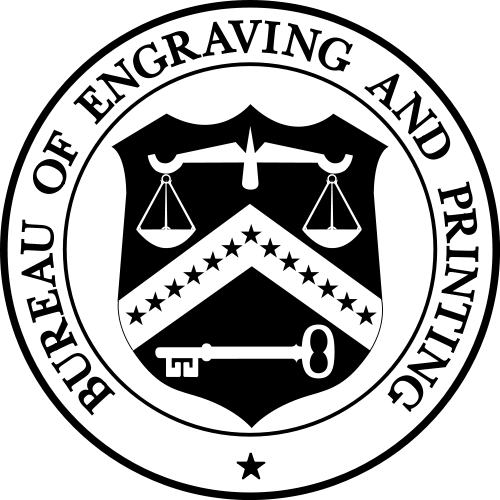Jun 9, 2013 | coins, counterfeit, legislative, policy
Following the failure of the House of Representatives to even consider the Collectible Coin Protection Act in the 112th Congress (H.R. 5977), Representative Lamar Smith (R-TX) kept his promised and re-introduced the bill into consideration for the 113th Congress. On May 7, 2013, H.R. 1849 was assigned to the House Energy and Commerce Committee. The bill was introduced two days before the National Money Show, the current co-sponsors are Reps. Bill Cassidy (R-LA), Steve Scalise (R-LA), and Henry Waxman (D-CA). Fred Upton (R-MI) is the Chairman of the Energy and Commerce Committee and Waxman is the Ranking Member. Both Cassidy and Scalise are members of that committee.
The bill is exactly the same as H.R. 5577 that was introduced late in the 112th congress.
Rep. Steve Scalise is a new addition to this bill. He represents Louisiana’s 1st District that covers an area north and to the west of New Orleans that includes Metarie and Slidell. Scalise attended a reception at the National Money Show where he expressed his commitment to see the bill pass.
Scalise is the newly elected chairman of the Republican Study Committee (RSC), a caucus of House Republicans “organized for the purpose of advancing a conservative social and economic agenda in the House of Representatives.” In an interview during the National Money Show reception, Scalise said that would be H.R. 1849 an effective tool to help the hobby and since it is revenue neutral, he will recommend it to the 174 members of the RSC.
Currently, the Hobby Protection Act (15 U.S.C. §§2101-2106 and 16 CFR 304) does not allow for enough protection for the buyer. Aside from requiring the word “COPY” to appear on a copy, it does not allow for buyers or the government to take action against resellers, only the manufacturers.
When the Hobby Protection Act was first enacted in 1973 and updated in 1988, the online world did not exist the way it does today. It was easier to trace the manufacturers and the overseas sellers than the distribution channels are today. By the time a counterfeit coin reaches the United States, it could have been bought and purchased several times before being noticed. Then there is no remedy for those who have been duped.
Another problem is that the counterfeiters are learning to counterfeit slabs. Both NGC and PCGS have seen their slabs counterfeited or altered holding counterfeit coins. Both NGC and PCGS have the same problems with trying to protect their brands against counterfeiters.
The introduction of the bill is the result of the work of the Industry Council for Tangible Assets (ICTA) and Gold and Silver Political Action Committee (GSPAC), and the numismatic community working with key representatives to craft an effective legislation. It is also written to ensure support from congress. Benefits of the new law are as follows:
- Include the distribution and sale of items not properly marked as being a COPY
- Expands the provisions to include “any person who provides substantial assistance or support to any manufacturer, importer, or seller” who knowingly engages in any act or practice that violates the Act;
- Expands the ability for those who were sold counterfeit items to include the counterfeiter, their agent in the United States, or anyone who knowing “transacts business” in violation of this Act;
- Extend trademark violations and remedies to help third-party certification services protect against counterfeit holders.
These new provisions will allow collectors, dealers, and grading services to bring legal actions that are much more effective, with much stronger remedies than previously existed. It will allow those harmed to work with the Justice Department to bring criminal actions, where apporpriate.
WE STILL NEED YOUR HELP
The only way to ensure that H.R. 1849 becomes law, especially since we are approaching the end of this session in an election year, is to contact your member of congress will let them know that the numismatic community supports this Act and that their support is important.
To contact your representatives, visit house.gov and enter your Zip Code at the top right of the page. When you contact your representative, you should mention that H.R. 1849 is revenue neutral and will not require additional appropriations. The bill will go a long way in combating counterfeit rare coins in the marketplace, saving collectors and investors millions of dollars in fraudulent transactions.
To read a copy of the bill and to track its progress, you can use govtrack.us. Sign up for a free account then visit this link for information about this bill and how to track its progress.
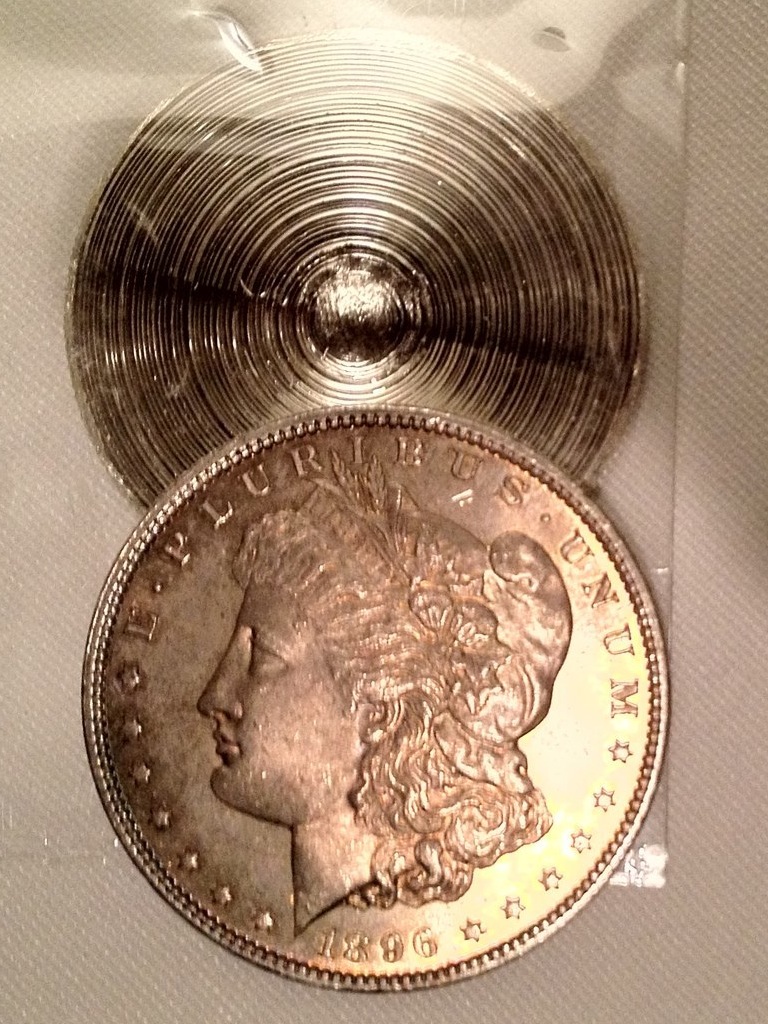
An example of a Morgan Dollar cut in half to match a date with a mintmark to have the coin appear something it is not. Coin was in a counterfeit PCGS slab and caught by one of their graders.
DISCLAIMER: I am working as Political Coordinator for the Gold and Silver PAC.
Jun 3, 2013 | coins, legislative, policy
H.R. 1905: Mother’s Day Centennial Commemorative Coin Act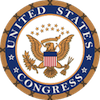
Sponsor: Rep. David McKinley (R-WV)
• Introduced: May 9, 2013
• Referred to the House Committee on Financial Services
Track this bill at http://www.govtrack.us/congress/bills/113/hr1905
H.R. 1071: To specify the size of the precious-metal blanks that will be used in the production of the National Baseball Hall of Fame commemorative coins.
Sponsor: Rep. Richard Hanna (R-NY)
• This bill is a technical change to the National Baseball Hall of Fame Commemorative Coin Act.
• Signed by the President on May 17, 213
• This bill became Public Law 113-10
See the information about this bill at http://www.govtrack.us/congress/bills/113/hr1071
S. 1011: Boys Town Centennial Commemorative Coin Act
Sponsor: Sen. Mike Johanns (R-NE)
• A bill to require the Secretary of the Treasury to mint coins in commemoration of the centennial of Boys Town
• Introduced: May 22, 2013
• Referred to the Senate Committee on Finance
Track this bill at http://www.govtrack.us/congress/bills/113/s1011
May 3, 2013 | coins, legislative, policy
S. 768: Sound Money Promotion Act
 Sponsor: Sen. Mike Lee (R-UT)
Sponsor: Sen. Mike Lee (R-UT)
• A bill to treat gold and silver coins used as legal tender in the same manner as United States currency for taxation purposes.
• Introduced: April 18, 2013
• Referred to the Senate Committee on Finance
Track this bill at http://www.govtrack.us/congress/bills/113/s768
H.R. 1653: Pro Football Hall of Fame Commemorative Coin Act
Sponsor: Rep. James Renacci (R-OH)
• Introduced: April 18, 2013
• Referred to the House Committee on Financial Services.
Track this bill at http://www.govtrack.us/congress/bills/113/hr1653
H.R. 1719: Cents and Sensibility Act
Sponsor: Rep. Steve Stivers (R-OH)
• To amend title 31, United States Code, to save the American taxpayers money by immediately altering the metallic composition of the one-cent, five-cent, dime, and quarter dollar coins, and for other purposes.
• Introduced: April 24, 2013
• Referred to the House Committee on Financial Services.
Track this bill at http://www.govtrack.us/congress/bills/113/hr1719
Apr 1, 2013 | coins, legislative, policy
H.R. 1071: To specify the size of the precious-metal blanks that will be used in the production of the National Baseball Hall of Fame commemorative coins.
Sponsor: Richard Hanna (R-NY)
• Introduced: March 12, 2013
• Referred to the House Financial Services Committee on March 12, 2013
Track this bill at http://www.govtrack.us/congress/bills/113/hr1071
H.R. 1218: Commemorative Coins Reform Act of 2013
Sponsor: Rep. Justin Amash (R-MI)
• To prohibit the payment of surcharges for commemorative coin programs to private organizations or entities
• Introduced: March 15, 2013
• Referred to the House Financial Services Committee on March 15, 2013
Track this bill at http://www.govtrack.us/congress/bills/113/hr1218
Mar 7, 2013 | coins, legislative, policy

Bibiana Boerio nomination to be the Director of the U.S. Mint was returned by the Senate.
President Obama has the option of resubmitting any nominations. Thus far, the president has not re-sent Boerio or any other nomination for Director of the U.S. Mint to the Senate for confirmation during the 113th congress.
The U.S. Mint has been without a permanent director since the resignation of Edmund Moy in January 2011. Since his resignation, the U.S. Mint has been lead by the Treasurer of the United States Rosie Rios with day-to-day operations being lead by Deputy Director Richard A. Peterson as Acting Director.
Image courtesy of the Pittsburgh Post-Gazette.
Mar 5, 2013 | coins, legislative, policy
This month’s list includes one late entry that was missed from January.
S. 203: Pro Football Hall of Fame Commemorative Coin Act
A bill to require the Secretary of the Treasury to mint coins in recognition and celebration of the Pro Football Hall of Fame.
Sponsor: Sen. Robert “Rob” Portman (R-OH)
• Introduced on January 31, 2013
• Senate Banking, Housing, and Urban Affairs Committee on January 31, 2013
Track this bill at http://www.govtrack.us/congress/bills/113/s203
H.R. 627: National Park Service 100th Anniversary Commemorative Coin Act
Sponsor: Rep. Erik Paulsen (R-MN)
To provide for the issuance of coins to commemorate the 100th anniversary of the establishment of the National Park Service, and for other purposes.
• Introduced: February 13, 2013
• Referred to the House Financial Services Committee on February 13, 2013
Track this bill at
Feb 5, 2013 | coins, legislative, policy
The 113th congress was gaveled into session at noon on January 3, 2013 as required by the U.S. Constitution. First meeting of the new congress are largely procedural that includes giving the oath of office to anyone that was elected (the entire House of Representatives and one-third of the Senate) and electing leaders. Congress began their legislative calendar on January 4.
H.R. 77: Free Competition in Currency Act of 2013
To repeal the legal tender laws, to prohibit taxation on certain coins and bullion, and to repeal superfluous sections related to coinage.
Sponsor: Rep. Paul Broun Jr. (R-GA)
• Introduced on January 3, 2013
• Referred to the Financial Services, Ways and Means, and the Judiciary Committees on January 3, 2013
Track this bill at http://www.govtrack.us/congress/bills/113/hr77
H.R. 220: Stop the Coin Act
To limit the face value of coins that the Secretary of the Treasury may issue.
Sponsor: Rep. Greg Walden (R-OR)
• Introduced on January 14, 2013
• Referred to the House Committee on Financial Services on January 14, 2013
Track this bill at http://www.govtrack.us/congress/bills/113/hr220
S. 94: To terminate the $1 presidential coin program
Sponsor: Sen. David Vitter (R-LA)
• Introduced on January 23, 2013
• Referred to the Senate Committee on Banking, Housing, and Urban Affairs on January 23, 2013
Track this bill at http://www.govtrack.us/congress/bills/113/s94
Jan 17, 2013 | coins, commentary, fun, legislative
Anyone that holds congress in contempt for the dysfunction that plagues the government should love the first two coin-related bills that have been introduced to congress.
The first pitch of political piffle is H.R. 77, the Free Competition in Currency Act of 2013. This folly was introduced by Rep. Paul Broun (R-GA) that takes up where the now retired Ron Paul has left off by introducing a bill “To repeal the legal tender laws, to prohibit taxation on certain coins and bullion, and to repeal superfluous sections related to coinage.” It marks the fourth congressional session that this bill has been introduced and it is likely to meet the same fate as its predecessors.
Although I took this seriously in the past, it appears that Broun did not get the memo that the government needs people to govern and not pontificate. Then again, it is difficult to find anyone of the 535 members of congress who really wants to govern on either side of the aisle, so I expect more of this hooey from this congress. It is unfortunate that he and I share the same undergraduate alma mater.
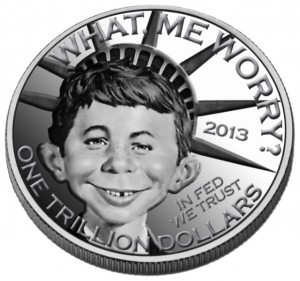
Dallas-based Heritage Auctions, the world’s largest collectibles auctioneer, is asking the public to suggest names, and has even created a proposed design for the coin. Information about naming the coin now is on Heritage’s Facebook pages.
I love that phrase, “and for other purposes.” Adding it allows congress to add their favorite brand of pork onto any bill.
The problem is that H.R. 77 might make sense if it was not introduced in reaction to the rumored $1 Trillion platinum coin. Aside from the platinum coin idea being a nonsense proposal, the idea did not even come from the administration. The best I can find, it was some blogger’s delusion that problems can be solved without the understanding of basic accounting—essentially, balancing the books when you create money. It is amongst the reasons why the nation is in such debt.
Besides, there does not seem to be anyone around who could afford such a coin. It would make a heck of a collectible!
At another time and in a different context, it might be worth discussing the merits of H.R. 77, which would limit the face value of any coin produced by the U.S. Mint to $200. But for now, both the Department of the Treasury and the Federal Reserve said that it is not going to happen and that neither “… believes that the law can or should be used to facilitate the production of platinum coins for the purpose of avoiding an increase in the debt limit.”
Unfortunately, I have a feeling that the Treasury’s statement will not end the discussion.
Maybe we can change the subject to replacing the paper dollar with a coin!
The Alfred E. Neuman-head Trillion Dollar coin mockup courtesy of Heritage Auctions. And if you think that’s funny, it seems that the mad folks at Mad magazine thought if it first!
Jan 3, 2013 | coins, commemorative, legislative, policy
Public Law No. 112-201: Mark Twain Commemorative Coin Act
To require the Secretary of the Treasury to mint coins in commemoration of Mark Twain.
Sponsor: Rep. Blaine Luetkemeyer (R-MO)
• Signed by the President on December 28, 2012
See this bill at http://www.govtrack.us/congress/bills/112/hr2453
Public Law No. 112-209: March of Dimes Commemorative Coin Act of 2012
To require the Secretary of the Treasury to mint coins in recognition and celebration of the 75th anniversary of the establishment of the March of Dimes Foundation.
Sponsor: Rep. Bob Dold (R-IL)
• Passed the Senate on December 10, 2012
• Signed by the President on December 18, 2012
See this bill at http://www.govtrack.us/congress/bills/112/hr3187
The 112th Congress formally adjourned just after 12:30 P.M. on January 2, 2013 as one of the least productive in decades. It has been reported that this congress passed 219 bills as compared to 383 bills passed by the 111th congress and 460 by the 110th congress. As a comparison, the 80th congress (1947-48) that President Harry Truman labeled the “Do-nothing Congress” passed 906 bills.
Dec 27, 2012 | base metals, BEP, bicentennial, bullion, coins, commemorative, copper, currency, dollar, Euro, Federal Reserve, First Spouse, gold, halves, legislative, nclt, news, nickels, policy, silver, US Mint
We end numismatic 2012 almost the same way as we began, discussing what to do about the one-dollar coins. The over production lead to a quite a number of bills introduced in congress to try to fix the perceived problem but none ever made it to a hearing, let alone out of a hearing. Rather, the U.S. Mint hired Current Technologies Corp. (CTC) to perform an alternative metals study required by congress.
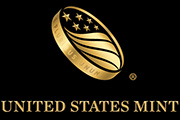
When the U.S. Mint finally published the report and a summary they made a recommendation to study the problems further because they could not find suitable alternatives to the current alloys used. While reading the summary gives the impression that the request is reasonable, the full 400-page report describes the extensive testing and analysis that the U.S. Mint and CTC performed leaving the reader curious as to why they were unable to come to some sort of conclusion—except that there is no “perfect” solution. This is a story that will continue into 2013 and be on the agenda for the 113th congress when it is seated on January 3, 2013.
The other part of the discussion is whether or not to end the production of the one-dollar Federal Reserve Note. It was the last hearing before the House Financial Services subcommittee on Domestic Monetary Policy and Technology for Rep. Ron Paul (R-TX) and the 112th congress that will certainly carry over into 2013.
This does not mean the Bureau of Engraving and Printing is without its controversy. In order to comply with the court order as part of American Council for the Blind v. Paulson (No. 07-5063; D.C. Cir. May 20, 2008 [PDF]) and the subsequent injunction (No. 02-0864 (JR); D.C. Cir. October 3, 2008 [PDF]), the BEP has been working to provide “Meaningful Access” to United States currency.
Secretary of the Treasury Timothy F. Geithner approved the methods that will be used to assist the blind and visually impaired to U.S. currency on May 31, 2011. In addition to examining tactile features, high contrast printing, and currency readers, the BEP issued a Request for Information for additional information to implement their plan. The BEP will be participating at stakeholder organization meetings to socialize and refine their plans. There will probably be few announcements before the conventions of the National Federation of the Blind and American Council of the Blind this summer.

Another building controversy from the BEP is whether the redesigned $100 notes will find its way into circulation. Introduced in April 2010, full production has been delayed because of folding during the printing process. The situation has to be so severe that the BEP has not announced a new release date and delayed releasing the 2011 CFO Report [PDF] to the end of Fiscal Year 2012 while finding a way to bury the scope and costs of the delays. Will the redesigned $100 Federal Reserve Note be issued in 2013? Stay tuned!
Staying with currency issues, there should be a new series of notes when a new Secretary of the Treasury is appointed. It is known that the current Secretary Timothy F. Geithner wants to pursue other options. If the BEP follows its past practice, notes with the new Secretary of the Treasury’s signature would be Series 2009A notes. There have been no reports as to whether Treasurer Rosie Rios will continue in her position.
As for other products, the BEP will continue to issue specially packaged notes using serial numbers that are either lucky numbers (i.e., “777”) or ones that begin with “2013” as part of their premium products. Of course they will continue to issue their sets of uncut currency.
Another carry over from 2012 will be whether the U.S. Mint will issue palladium coins that were authorized by the American Eagle Palladium Bullion Coin Act of 2010 (Public Law No: 111-303 [Text] [PDF]). The law requires that the U.S. Mint study of the viability of issuing palladium bullion coins under the Act. That report was due to congress on December 14, 2012 but has not been made public at this time.

Bibiana Boerio was nominated to be the Director of the U.S. Mint.
Other than the higher prices for silver products, the U.S. Mint should not generate controversies for its 2013 coin offerings. There will be no changes for the cent, nickel, dime, and half dollar with the half dollar only being struck for collectors since it has not been needed for circulation since 2002. These coins will be seen in uncirculated and proof sets with silver versions for the silver sets.
For the sets with the changing designs, the reverse of the 2013 America the Beautiful Quarters Program will honor:
There has been no confirmation from the U.S. Mint whether they will strike San Francisco “S” Mint quarters for the collector community as they did in 2012.
The 2013 Presidential $1 Coins ends the 19th century and begins the 20th century with some of the more interesting Presidents of the United States in history:
If we honor the Presidents we have to honor their spouses. In 2013, the First Spouse Gold Coins will honor:
- Ida McKinley
- Edith Roosevelt
- Helen Taft
- Ellen Wilson (died 1914)
- Edith Wilson (married Woodrow Wilson 1915)
The U.S. Mint has not released designs for these coins at the time of this writing.
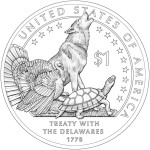
2013 Native American Dollar Reverse Design
Congress has authorized two commemorative coin programs for 2013:
American Eagle coin programs will continue with the bullion, collector uncirculated, and proof coins for both the silver and gold. The American Eagle Platinum bullion coin will continue to use its regular reverse while the American Eagle Platinum Proof will continue with the Preamble Series. The Preamble Series is a six year program to commemorate the core concepts of the American democracy as outline in the preamble of the U.S. constitution. For 2013, the reverse will be emblematic of the principle “To Promote the General Welfare.” The U.S. Mint has not issued a design at this time.
Currently, there are no announced special products or sets using American Eagle coins and no announced plan for special strikings such as reverse proofs or “S” mint marks.
Finally, we cannot forget the American Buffalo 24-Karat Gold Coins that will be available as an uncirculated coin for the bullion/investor market and a proof coin for collectors.
And I bet you thought that 2013 would be a mundane numismatic year!





